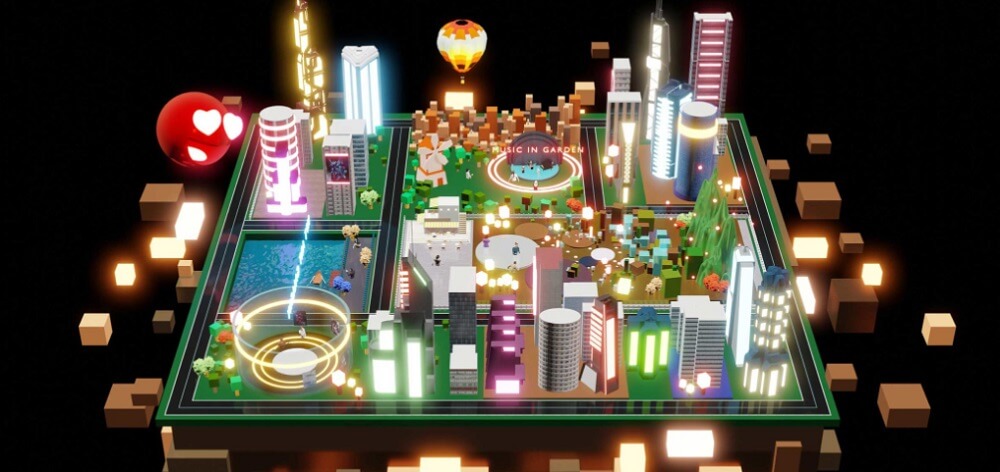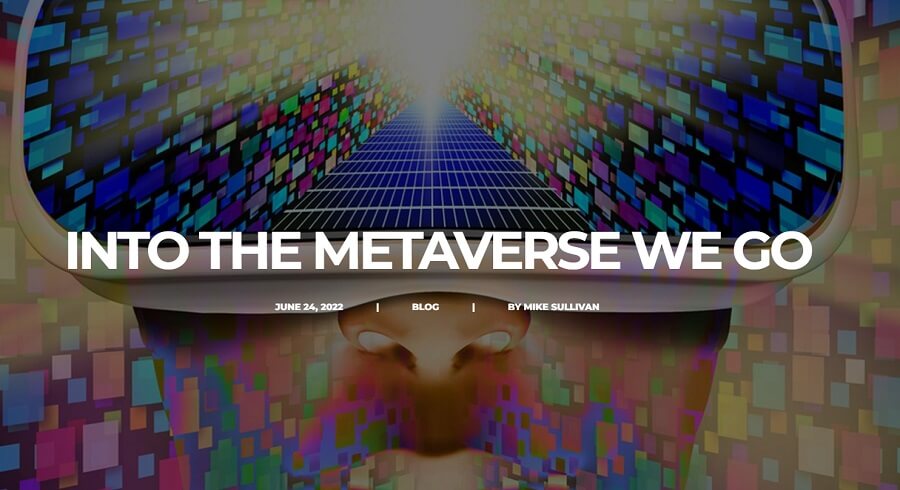For a century, advertising and marketing success has turned on people’s desire for something different. It used to be that we wanted a different look. A different meal. A different vacation, car, outfit, or experience. Now, we’re in search of a different life.
The first generation of the internet connected us to information. Web 2.0 connected us to each other bringing the evolution of social media and its narcissistic empowerment. Ask Gen Z what they want to be when they grow up. If the answer isn’t “famous,” it’s most likely “influencer.” More than ever before, millions of Americans are consumed with reinventing themselves, and how and where they spend their lives. And thanks to the burgeoning reality of the metaverse and Web 3.0, they’re now about to get their chance. Why is that important for those of us in advertising and marketing? Because where they go, brands will follow.
Everything is possible.
While it’s certainly now approaching greater cultural consciousness, the term “metaverse” is actually 30 years old. It was first coined by author Neal Stephenson in his 1992 novel, “Snow Crash” and since then, we’ve seen it in “The Matrix” films and Ernest Cline’s “Ready Player One” books. If you’re unfamiliar with exactly what the metaverse is, you’re not alone — and there’s a good reason for that. The metaverse is still in its infancy which means no one really understands exactly what it will become.

For now, think of the metaverse as the aggregate of all the virtual worlds on the internet plus augmented reality. A simulated, hyper-realistic world where consumers’ digital and virtual lives converge.
I like the way Cathy Hackl, renowned “Godmother of the Metaverse,” and author of “Navigating the Metaverse: A Guide to Limitless Possibilities in a Web 3.0 World” frames the current situation.
“I see the metaverse as the next step in how humans will engage with technology. It is a further convergence of our physical and digital lives. And, in some ways, it’s about the internet breaking free from the rectangles in our hands, desks and walls, and existing all around us. The metaverse makes our world into a combined experience of virtual and physical. In other words, it’s about shared virtual experiences that can happen in the physical, as well as the virtual world. We’re at the end of Web 2.0 which connected people and heading into Web 3.0 which connects people, places, and things. To me, the metaverse is an extension of what comes next for human creativity. It is also about our identity and digital ownership. The metaverse will be enabled by many different technologies like blockchain, artificial intelligence, augmented reality, virtual reality, 5G, edge computing and beyond.”
No longer if, but when.
As Hackl points out, while the infrastructure and creative realization of the digital universe is still very much in a nascent stage, the activity connected to building it is exploding. In the past year, we posted not one, not two, but three different blogs about NFTs and the growth of the digital universe. Even then, it felt like the metaverse was realistically still years away. It doesn’t feel like that anymore. Culturally, the metaverse seems to be everywhere and where many were once highly skeptical about a digital universe, NFTs, crypto and the like, reality – both actual and virtual – is right in front of us. The metaverse is no longer a far away if, but a when. And when is a lot sooner than we might think.
In the future, when history questions when the tipping point came for our embrace of the metaverse, 2022 may well be the year. Even though we’re years from the vast universe we know is coming, the concept of complete sensory immersion and augmented reality is quickly reaching critical mass. Exhibits like the Van Gogh Art Exhibit moving around the country, the more fully immersive Illuminarium Experiences in Atlanta and Las Vegas, and even brand experiments like the Nikeland/Roblox Experience at the Nike store on 5th Avenue in New York give us a glimpse of a more heightened all-sensory entertainment experience away from home. Where things will get really interesting – especially for those of us in advertising and marketing – is when the once blurred, now disappearing line between entertainment and commerce comes home. In the gaming world, it already has.
Branding in Web 3.0.
A recent CNBC article about the metaverse and the economy noted, “Luxury fashion brand Balenciaga has already teamed up with Fortnite to deliver to users designer ‘skins’ to wear inside the game. Gucci has done the same with Roblox, and Louis Vuitton and Ralph Lauren have launched their own Roblox experiences. Brian Trunzo, Metaverse Lead at Polygon Studios, which focuses on gaming, NFTs and Web3 efforts linked to the Polygon digital currency and Ethereum blockchain network, says nimble, smart streetwear brands are already in the space as well. ‘The players have finally taken the field, and the game is about to truly start.’”
In the same article, according to Avery Akkineni, president of VaynerNFT, “There’s a direct commercialization opportunity in the gaming space … people are very used to paying $20, $50, $100 per skin.” And, like in real life, people are willing to pay to make themselves look good. As Akkineni noted, “The digital version of Gucci’s Dionysus bag sold on Roblox for more than the bag’s IRL retail price.” That might seem ridiculous were it not for the fact consumers are paying millions of dollars for virtual real estate and creating a digital land rush on Decentraland where the cheapest property is $11,000. Last year, NFTs accounted for $17 billion in revenue. It would be easy to dismiss all this as a “gamer” thing, or some fringe technology unworthy of attention or investment. If that’s where you are, perhaps this will change your mind.

Analyst estimates suggest spending in the metaverse could reach $800 billion by 2024. That’s 18 months from now.
Meeting Consumers in the Metaverse.
For every brand, but especially for challenger brands, now is the time to start thinking about the metaverse and the opportunities it provides. If, indeed, consumers start spending more time in digital spaces, how can we as brands make sure we are a presence there? How can we monetize that interaction? And if cryptocurrency in all its forms is how people will make purchases in the metaverse, what considerations do we need to make now to be ready?
Need another reason to believe? Thanks to cryptocurrency and the blockchain, with Smart Contracts, brands will be able to cash in throughout the life of any digital asset. Let’s go back to the Gucci Dionysus bag that sold for $4,115 on Roblox. Next month, if the buyer turns around and sells that purse to someone else for $10,000, depending on how the smart contract was written, Gucci will get a cut of that purchase … and every successive sale of that bag for the life of the asset. What brand leader wouldn’t light up at the thought of passive income?
The Future Is Approaching Quickly.
We just came through two years of COVID with one year in prolonged national lockdown. What might that have been like with a virtual world where brands could continue interacting with their consumers in a more dynamic way than simply visiting a website? And once that type of immersive interaction is common practice, how do you think simple websites are going to hold up? On a staffing note, for those of us with designers, art directors, writers, UX specialists, and digital experts and strategists, when the immediacy of building the metaverse infrastructure hits in the next few years, what do you think that will do to our talent pool? Like it or not, we can’t afford not to pay attention.
The good news for challenger brands and those of us who champion them and are ready to lean into the new reality is that the metaverse infrastructure is still in its infancy. We have time to think and plan, but indeed, now is the time to get started. Anything is possible, but it starts with imagination. Creativity is the great equalizer. But thinking on this scale takes time.










